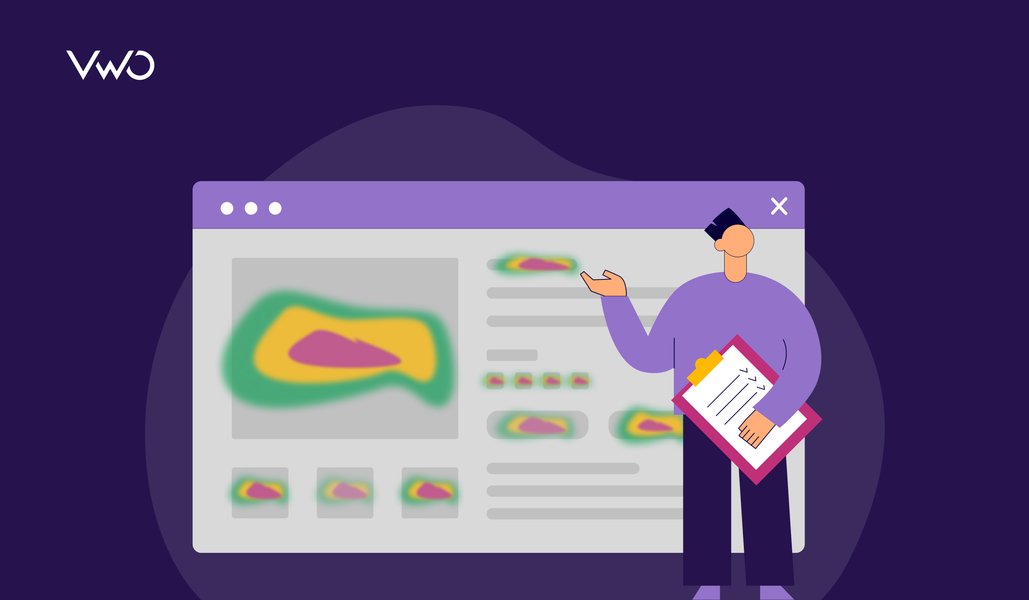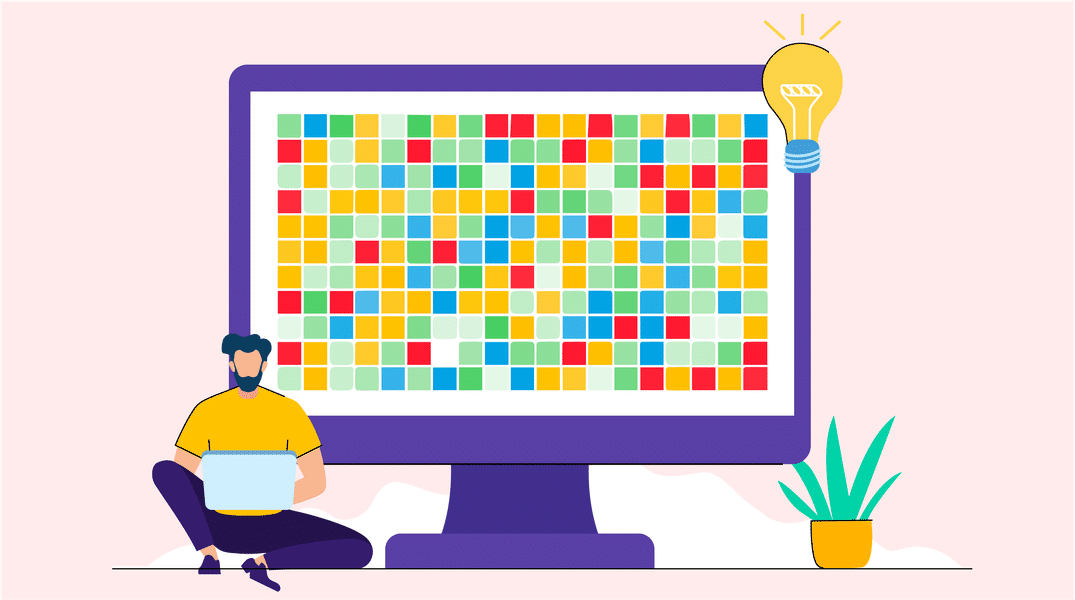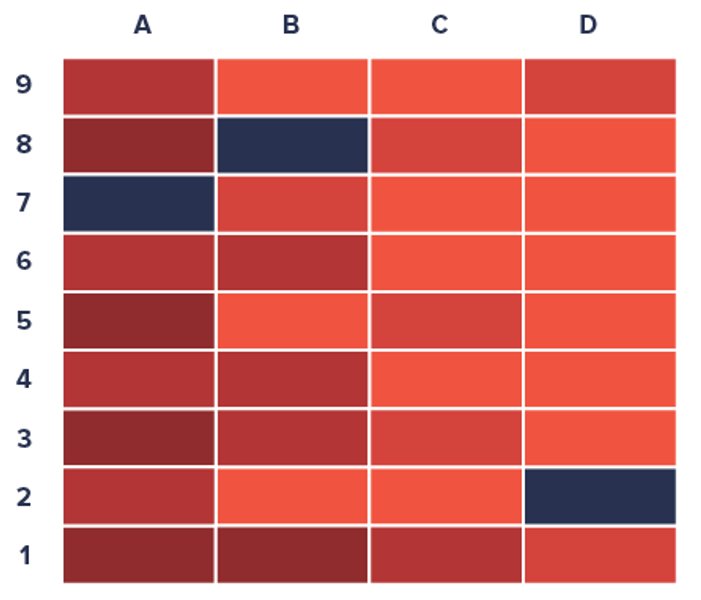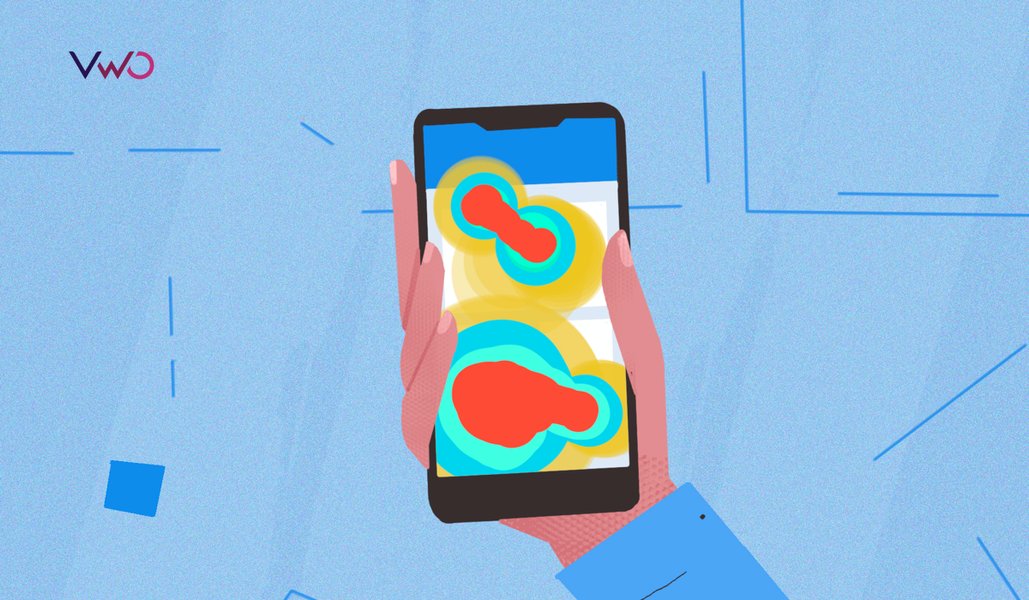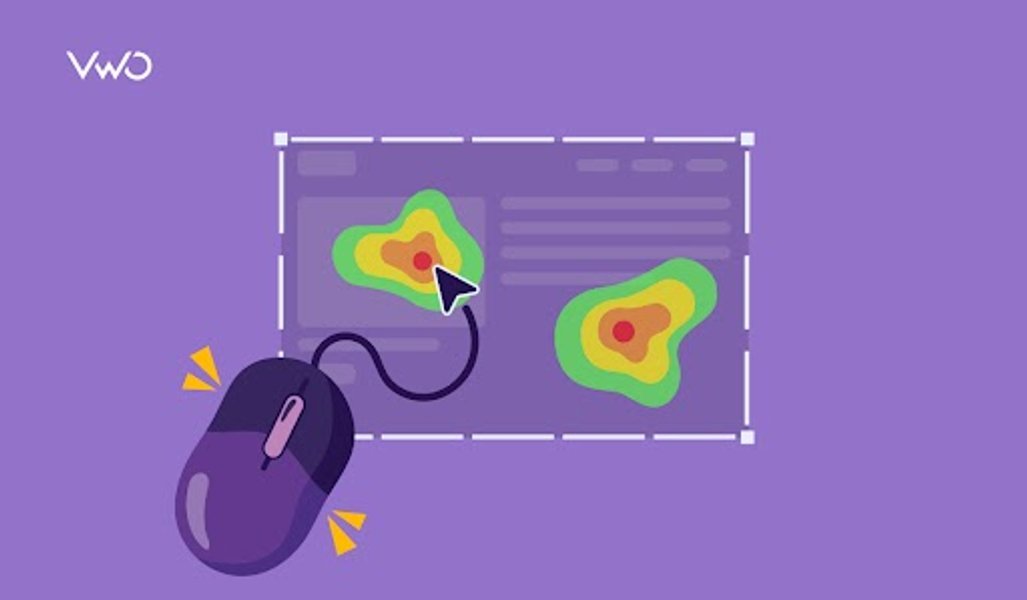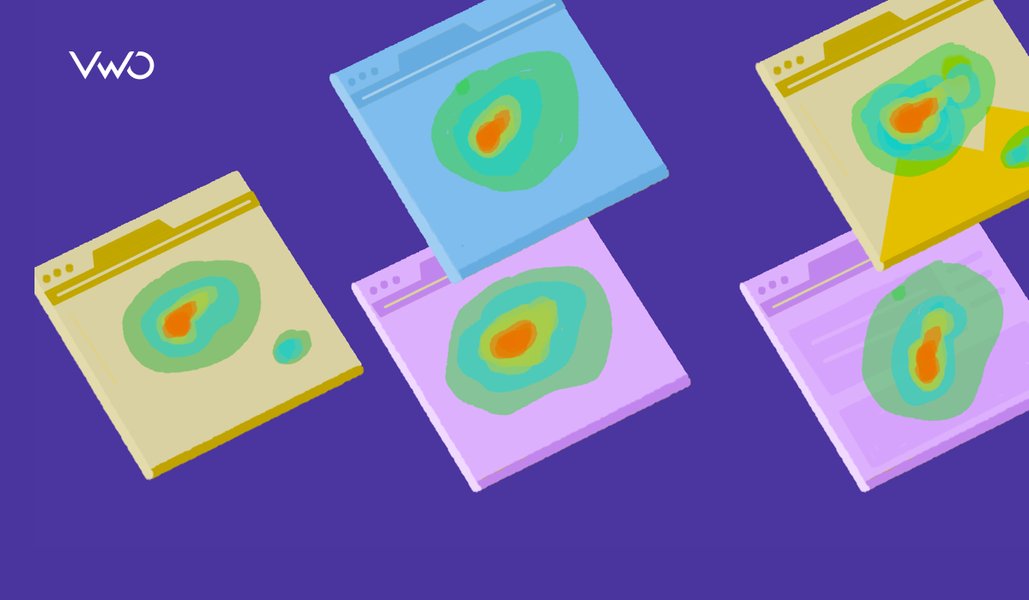Shopify is one of the most widely used platforms to host eCommerce websites. Yet, there is very little literature available on the client-side optimization of Shopify-hosted eCommerce stores.
A quick analysis of the SERP results will tell you that most articles either limit themselves to giving readers a list of tools and apps for Shopify Stores while others touch upon backend and SEO optimization.
This article aims to educate readers who are not familiar with leveraging heatmaps for their Shopify store’s conversion rate and experience optimization. It will navigate your way through how heatmaps can help you craft experiences that guarantee increased ROI.
Download Free: Website Heatmap Guide
With VWO Heatmaps, you can see how visitors browse your website, what catches their attention, and which elements distract them. From dynamic heatmaps, scrollmaps, and element lists, to behavioral segmentation – this best tracking app for Shopify offers a plethora of features that cater to the requirements of organizations of every size. Take an all-inclusive and guided free trial to test our tool.
Besides VWO, we’ve also listed other free and premium heatmap tools that can help with your store optimization efforts. Let’s begin!
Why Do You Need Shopify Heatmap?
Launching an eCommerce store using Shopify may be a fairly simple task, as iterated above, but ensuring that the store converts is a different ball game altogether.
To drive consistently growing conversions and deliver stellar experiences that boost repeat buyers, understanding your website performance as well as your website visitors is extremely crucial.
There are 2 types of data that eCommerce stores can leverage to understand how their website is performing and strategize on improving it: quantitative data and qualitative data.
Quantitative website data comes through analytics tools like Google Analytics. GA tracks key performance metrics like conversion rate, page traffic, traffic source, bounce rate, cart abandonment rate, and other such quantifiable metrics.
For instance, an online merchandise retailer can integrate their website with GA to track how many visitors are dropping off on their checkout page. And let’s assume that the analyst, after looking at the data, realized that the final number of drop-offs on the checkout page stood at a staggering 80%.
The analyst is left with one simple question that GA could not answer – WHY? Why was the checkout page drop-off so high? What was making visitors reach the final stage of the purchase funnel and then leave without finishing the purchase?
This is where Qualitative Research, particularly using heatmaps, comes into the picture. Heatmaps follow visitors’ journeys end to end and give you a clear picture of why they took the action that they did on your website.
Going back to the merchandise retailer example, by looking at the heatmap of the checkout page, the analyst can now identify areas of friction as well as redundant and missing information by taking cues from visitors’ behavior on the checkout page.
Visitors are clicking on the payment options drop-down yet not completing a purchase – maybe there aren’t enough payment options; visitors are clicking on the promo code field and dropping off from there – maybe you need to list down available codes in a drop-down; visitors not clicking on the CTA at all – maybe you need to test its copy and placement.
Heatmaps enable you to step into your visitors’ and users’ shoes and experience first-hand what they experienced on your website. Such a peek into visitor journeys can equip you with so many actionable insights to act on for your optimization needs.
Because eCommerce is one of the most dynamic and ever-changing industries, it becomes even more important that your Shopify store is in its most optimized form. Let us look at how heatmaps can help in the optimization of Shopify stores and their conversion rate:
1. Increase conversions by reducing friction
An eCommerce website is never really a hundred percent ready. Due to the dynamic nature of its target audience, almost every day, a new pain point surfaces to which businesses need to react promptly or they will lose to the competition. This warrants launching new products, updating security, shipping, and other policies, and more such changes to your website.
All these modifications can introduce bugs or other unplanned issues. Heatmaps can help Shopify stores follow their visitors’ journeys end-to-end and discover all such bugs and friction areas in their conversion funnel.
An eCommerce website’s analyst can look at the mouse heatmap of their product pages and examine how each element is performing individually as well as in combination with the other elements of the page.
For instance, are visitors hovering around the product page looking for any relevant information, like the size chart or available colors, or are they clicking on the product image expecting it to expand, or if your “Add to Cart” button is readily discoverable or not, and so on.
All such insights go into crafting a website that does not create friction between the visitors and the interface and that matches visitors’ expectations, which ultimately results in increasing conversions.
2. Combat cart abandonment
Cart abandonment is the Achilles heel of every eCommerce website. Despite having ticked off every possible box from the products’ perspective, some eCommerce stores still struggle to bring down their cart abandonment rate.
There can be many reasons for this: unexpected shipping charges, lack of refund options, long checkout processes, lack of payment options, lack of guest checkout, and so on.
The best tracking app for Shopify should enable you to visualize visitors’ on-page behavior and analyze every click, scroll, pause, and mouse movement they make can help you understand how they interact with your Shopify store, and reckon which elements and sections of your cart page attracts or distracts them.
For example, looking at the heatmap of the cart pages, an online clothes retailer can identify that visitors only abandon the cart after they open the tax calculator dropdown. This can indicate that the visitors find the tax amount being charged to be on the higher end.
Or, the ‘suggested for you’ section on the cart page is distracting visitors from finishing the purchase and sending them back to the product page. It can be inferred from this that cross-selling on the cart page may not be the best strategy for your store.
3. Get data-backed hypothesis to run experiments
Bad UX can lead to your revenue taking massive hits. The phrase, a stitch in time saves nine, fits perfectly well here, especially when a timely fix can not only save but also make huge sums of Dollars for a Shopify store.
The key is understanding the visitors in and out and experimenting with an interface that not only attracts visitors but also nudges them to finish their purchase. Both these can be achieved for your Shopify store with the help of heatmaps.
By letting you step into your visitors’ shoes and experience things on your website, heatmaps help you gather on-page behavioral data of site visitors and identify segment-specific pain points. By equipping you with actionable visitor behavior insights, heatmaps help you formulate data-backed hypotheses.
When these hypotheses are tested continuously with thorough prioritization, it enables you to fix broken elements, thereby, improving experiences drastically.
Download Free: Website Heatmap Guide
Top 10 Shopify Heatmap Apps
Here’s a list of the top 10 free & premium heatmap tools for your Shopify store that you can take out for a spin before making a huge monetary commitment to any tool:
1. VWO Insights’ Heatmap
VWO Insights’ heatmap tracks and visualizes visitor journeys on your website. You can choose from its varied offerings like the classic heatmap, scrollmap, clickmap, and more. It also offers a plethora of segmentation options (you can choose from the pre-defined segments or create your own segments).
And guess what’s more? VWO Heatmaps lets you track visitor behavior even on dynamic elements. For example, you can observe how visitors interact with a live chat widget or a form modal on your website. Further, if you wish to run heatmaps on a test variation to observe how visitors interact with it, you can easily do so using its heatmap capability.
VWO’s free AI-powered heatmap generator allows you to predict how visitors interact with your web page. It enables you to gauge bottlenecks based on user experience so that you can take the required conversion optimization measures.
To enable VWO Insights’ heatmap on your Shopify store, just install the VWO Smart Code on your website, create a revenue tracking goal, and start heat mapping.
Additionally, VWO’s heatmap tool comes in a suite with other visitor behavior analytics tools like session recording, form analytics, on-page surveys, and usability reviews. What’s more, – all these tools can be used through a single app from which point onward you can run as many campaigns as you want using any of these capabilities without any other code required.
VWO Insights dashboard elevates your user experience strategy, guiding you to extract deep, actionable insights and observations from a large array of user behavior data.
VWO offers a free trial, after which you can choose a plan based on the goals you want to achieve.
2. Retter Heatmap
Retter diligently records visitor activity and generates dynamic heatmaps that highlight the most interactive sections of your pages. By allowing you to replay how visitors engage with your products, collections, pages, and carts, this app gives in-depth insights into customer behavior.
While heatmaps offer valuable insights into the interactive elements of your pages, record and replay functionality allows you to watch and analyze your visitors’ actions. With this heatmap for Shopify, you can observe where your visitors click, scroll, and move on to web pages.
The combined power of heatmaps & replay aids in identifying landing page problems, ultimately contributing to improved sales.
Developed by Upify, Retter is the go-to tool for any eCommerce store that wants to enhance user experiences and drive conversions. With Upify, you can expect top-notch support from their dedicated team to address any inquiries you have.
3. Lucky Orange
Lucky Orange is a great heatmap for Shopify’s app store. This analytics tool lets you delve into visitor behavior, product interactions, and checkout abandonment, providing actionable insights for better conversions. Not only can you delve into every page’s element’s performance, but you can also study user behavior with dynamic elements like forms, pop-ups, and menus.
The platform goes further by offering session recordings that allow real-time observation of how users navigate and interact with different elements of your online store. Plus, you can leverage pre-built conversion funnels to pinpoint and address common drop-off points in the purchase journey.
Overall, integrating Lucky Orange into your Shopify store provides a comprehensive solution for informed decision-making, increased engagement, and ultimately, more successful conversions.
4. Hitsteps Analytics
With a 5-star rating on the Shopify app store, Hitsteps Analytics doesn’t just offer visitor web analytics but also lets you live chat with your visitors. This heatmap for Shopify helps you identify main selling points by following each visitor’s stream identifying products that are generally brought together, and so on.
Hitsteps Analytics has many plans to choose from based on your business goals: Free Plan, Starter Plan, Basic Plan, Pro Plan, and Ultimate Plan.
5. Hindsight
Hindsight by Eastside Co. is an analytics tool offering heat mapping and visitor recording. The Hindsight heatmap enables users to switch between clicks, mouse movement, and scroll data. It also lets you map the aggregate of all three.
Apart from helping you identify where visitors spend maximum time on your website and which elements attract them the most, it lets you check what your visitors saw on your website with visitor recordings.
However, Hindsight does not offer a free trial or a free plan. Its basic plan starts from $19 a month and goes to $85 a month with the enterprise plan.
6. Mouseflow
Mouseflow is a preferred heatmap tool for Shopify stores. Its heatmap feature provides detailed insights into user behavior, showing where users scroll, what they click on, and how they navigate the page with their mouse. Simple adjustments, like moving a CTA button, can have a significant impact.
Additionally, the session recording and replay tool allows you to watch live recordings of users in action and monitor their frustration, helping you identify browsing patterns and potential issues. Mouseflow offers various plans, allowing users to choose the one that best aligns with their specific needs.
7. HeatMap by Webyze
This heatmap app offers a comprehensive solution for tracking your visitors’ interactions with your store. By monitoring every click, it generates a heatmap image that can help you identify and address any issues your customers may face while navigating your website. It can highlight elements that receive high clicks but lack interaction. Also, identifying popular click areas can help you to strategically rearrange your store to deliver positive user experiences and improved conversions.
8. Smartlook
Being a popular product analytics platform, Smartlook gives you crucial insights into visitor interactions on your website. The heatmaps feature allows you to understand user engagement at a glance and also helps improve the overall user experience.
Smartlook also offers a quick and easy way to integrate with Shopify, helping you stay on top of visitor interactions with three different types of heatmaps that include click, movement, and scroll.
9. FigPii
Other than being a comprehensive CRO tool, FigPii is known to offer important integrations with various platforms like Google Analytics and Shopify. The integration with Shopify is especially useful as it allows you to track and analyze visitor behavior through analytics tools like heatmaps and session recordings.
This Shopify heatmap integration helps you visualize user behavior, identify struggle areas, and track key conversion metrics. FigPii gives you access to click, move, and scroll heatmaps.
10. Plerdy
Known for its CRO capabilities, Plerdy allows you to conduct user behavior analysis with its set of all-in-one tools. One of its most popular features is the website heatmap, which gives you crucial data-driven insights into visitor behavior.
Plerdy also offers a Shopify integration with access to its robust behavior analytics tools including heatmaps, and session recordings.
Apart from a first-click analysis, Plerdy’s website heatmap tool helps you determine micro-conversions and also helps you understand the effectiveness of your CTA buttons.
Pricing Of Shopify Heatmap Apps
Here is a quick rundown of the pricing for each tool discussed in the previous section:
| Sr. no. | Tool | Pricing |
| 1 | VWO Insights – Heatmap | Starts at $167/month for a comprehensive insights tool that includes heatmaps, session recordings, on-page surveys, and form analytics. |
| 2 | Retter Heatmap | Starts at $4.99/ month. Free plan available. |
| 3 | Lucky Orange | Starts from $19/ month. Free plan available |
| 4 | Hitsteps Analytics | Starts from $4.99/ month. Free plan available. |
| 5 | Hindsight | Starts from $19/ month. Free plan available. |
| 6 | Mouseflow | Starts from $31/ month |
| 7 | HeatMap by Webyze | Standard plan of $17/ month |
| 8 | Smartlook | Starts from $55/ month. Free plan available. |
| 9 | Figpii | Starts from $49.99/ month |
| 10 | Plerdy | Starts from $29/month. Free plan available. |
Conclusion
Just building an eCommerce website with the help of Shopify will never be enough.
For a business to successfully take off and maintain growth, the same Shopify store has to be iteratively optimized by deciphering visitor needs and expectations.
What better way to truly know your visitors than with the help of heatmaps?
Now that you know the importance of visitor behavioral research for optimization, choose the best analytics app for Shopify and start making the most of the goldmine of visitor behavior insights you receive. If you’re impressed with VWO’s top-notch heatmap features that are missing in other tools, take a free trial to explore further. And if you find it helpful, pick a paid plan that fits your needs.

FAQs on Shopify heatmaps
Shopify stores are dynamic in nature as elements on the website may change very frequently. Qualitative analytics tools, such as heatmaps, help store owners to visualize their visitors’ journey across the store, and find out which elements are performing, and which ones are causing friction for the visitors.
Yes! There are a couple of apps that help you to create heatmaps for your Shopify store. We have listed down the top 4 apps for 2025, including VWO Insights. Know more about all the apps.
Yes, you will find several heatmaps that can be used for your Shopify website. In this blog, we have discussed 5 such heatmaps.
Although there are several options out there, we suggest that you go with VWO Insights, the best analytics app for Shopify.
Not only because of its advanced heatmap features, but also because its other behavioral analytics tools, including session recordings, surveys, and form analytics, enable a comprehensive analysis of visitor behavior on your website.
Plus, when integrated with VWO Testing, you can convert user insights into hypotheses and test them on the same platform, eliminating the need to move back and forth between different platforms. VWO Plan, the built-in project management tool, enables you to document all your observations, enhancing your user research and testing.
Integrate a third-party behavioral analytics platform like VWO Insights to your Shopify store to generate heatmaps showing visitor behavior on your website. To know how to go about this, read our article on the guide on Shopify-VWO integration.



